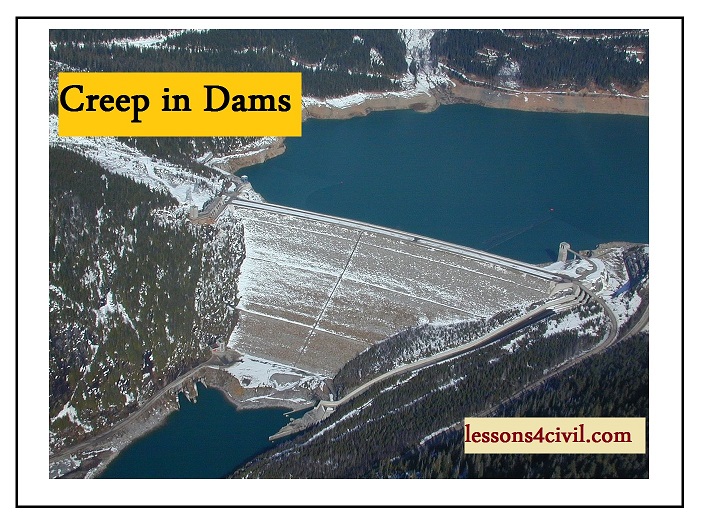soil creep in embankment dams
In case of dam construction, massive soil embankment is subjected to the presence of water which can provoke the occurrence of soil consolidation. Consolidation is a 2-step process during which soil experiences a time dependent settlement. In scientific terms, the second step is called creep (also known as secondary consolidation) occurring long after the soil settlement initiation, whereas the first stage is referred as primary consolidation. In case of soft soils with high water level, it is highly likely to observe extreme settlements or even embankment failure. In other words, in order to avoid such unfavorable deformations, it might be obligatory to either prolong the construction time or to undergo heavy financial cost for soil amelioration. Therefore, consolidation analysis must be carried out to predict the future behavior of dam and to minimize the cost of remedial works.
Generally the rate of Soil strain is a function of effective stress, total strain, and temperature, therefore the results of laboratory tests can be deviated from real soil compressibility due to disturbance of soil samples and changes in stress, temperature as well as moisture-content (Crawford 1965). Therefore laboratory results must be modified to represent a more realistic in situ soil compressibility behavior (Schmertmann 1953). While Terzaghi soil consolidation theory was based on elastic behavior of soil, Buisman (1936) showed that secondary consolidation (known as soil creep) need to be taken into accounts in many geotechnical projects such as embankment dams.
Although some equations have been proposed for estimation of dam post construction deformation, by Sowerset al.(1965) for example, they might be accompanied with large errors and even unpractical Clements (1984). Furthermore, 2 years later, an index was proposed for evaluation of soil secondary consolidation by Charles (1986).
Recently, soil viscoplasticity theory has become more popular among researchers such as Yin and Graham (1989) and Niemunis and Krieg (1996) for estimation of soil creep. Moreover, the advent of finite element software has brought about a sweeping change in modeling of soil consolidation in mega structures.
Dam Long-term deformations should be predicted and be compared with the results of continious field monitoring in order to spot any considerable excessive settlement which might be because of incipient malfunction(Tedd, P., Charles, J. A., Holton, I. R. & Robertshaw, A. C. (1997).GeÂotechnique47, No. 1, 33±48).
In this paper, a viscoplastic behavioral model, known as soft soil creep model (SSC), has been used in Plaxis-2D for creep analysis. The SSC model has several feature as follows:
- Soil stiffness would be stress dependent (logarithmic consolidation behavior).
- Primarily loading is differed from loading-unloading cycles.
- Ability of time dependent analysis (secondary consolidation).
- Possibility of modeling the time dependent over consolidation stress.
- Mohr-coulomb failure model



Comments